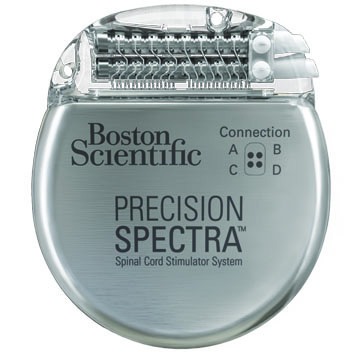
Boston Scientific presented new data demonstrating that the Precision Spectra spinal cord stimulator system provided 1.5 times better overall pain relief and 2 times better low back pain relief than the previous generation Precision Plus system. The improved outcomes with Precision Spectra were achieved in conjunction with the use of the proprietary Illumina 3D neural targeting software, designed to target pain with point-and-click simplicity. Results from the LUMINA cohort of the Precision Spectra observational study were presented at the International Neuromodulation Society 12th World Congress (6–11 June, Montreal, Canada).
The LUMINA cohort includes three patient groups: 213 consecutive patients treated with the Precision Spectra system for up to 24 months post-implant; 130 consecutive patients treated with the previous generation system, Precision Plus, in a comparative evaluation with the Precision Spectra System; and 25 consecutive patients treated with Precision Spectra and the new CoverEdge 32 surgical leads for up to six months post-implant.
“The results are exciting because we looked at consecutive patients, some with only low back pain, in a real-world setting,” said Julie Pilitsis, associate professor, Albany Medical College, USA, and one of the lead investigators for this study. “This is strong clinical evidence of the effectiveness of the Precision Spectra system in treating the types of challenging chronic pain patients that physicians see every day.”
Key findings of the study included:
LUMINA Spectra group:
- Sustained and highly significant reduction in overall pain from an average baseline score of 7.17 to 2.98 at 24 months post-implant (n= 117), as measured on the 0-10 numeric rating scale (NRS).
- In a subset of patients with only low back pain (n=51), a sustained and highly significant reduction from an average baseline score of 7.21 to 3.20 at 24 months post-implant.
- Significant reduction in disability (n=51), maintained out to 12 months, as measured by the Oswestry Disability Index.
- Responder rates (greater than or equal to 50% pain reduction) at 12 months post-implant for the Precision Spectra system were 72% for overall pain, 82% in leg pain only patients and 71% in low back pain only patients. For low back pain, the improvement with Spectra was more than twice that of the Precision Plus system group.
LUMINA Surgical group:
- Highly significant reduction in overall pain from an average baseline score of 7.7 to 2.7 at six months post-implant (n=23).
- In a subset of patients with only low back pain (n=9), 90% responder rate and a highly significant reduction from an average baseline score of 7.8 to 1.6 at six months post-implant.
“We designed the Precision Spectra to achieve even better outcomes when treating low back pain,” said Maulik Nanavaty, president, Neuromodulation, Boston Scientific. “These real-world clinical data demonstrate that Precision Spectra with our proprietary neural targeting software is a significant scientific advancement in pain management.”
The LUMINA cohort is part of the Boston Scientific PRO observational study.













